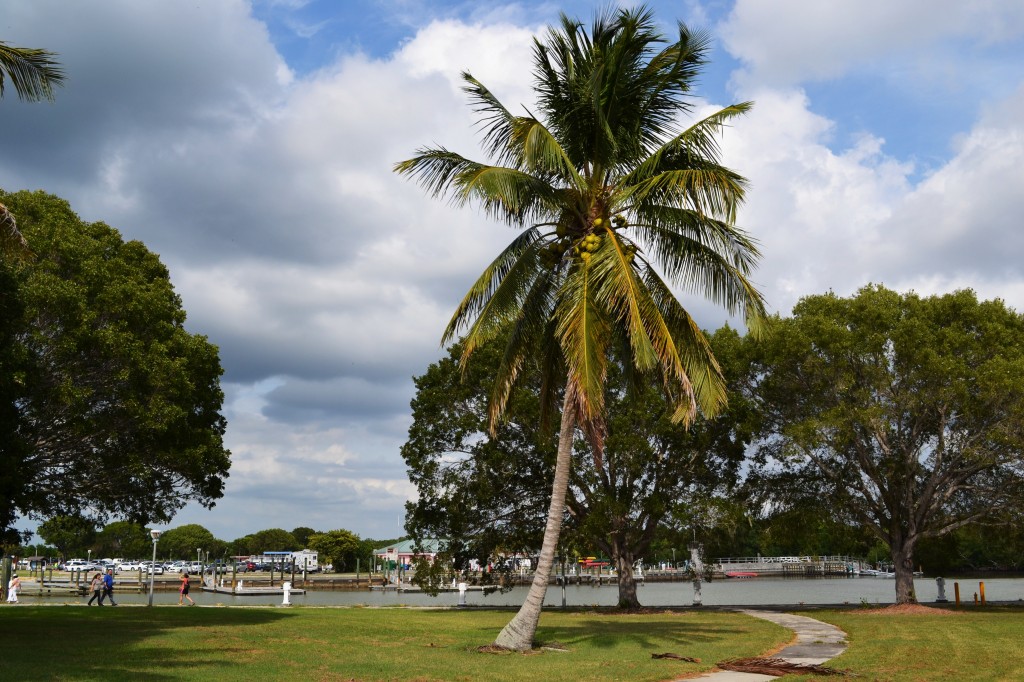A Guide to the Trees of South Florida
This is a guide to the trees of south Florida, including both natives and naturalized non-natives. Characteristics of leaf and twig, bark, flowers, fruits, habitat, and general growth form are described. This website covers over 90 species; the companion book expands on that to cover 150 species.
Leaf form is accented as the first feature to view when attempting an identification; flowers and fruits are also obviously useful features, and the times of the year when they will typically be present are noted. The naturalist should first place the tree into one of the basic leaf form categories and view the pages of that section to find the specimen. Within each category the trees are grouped in alphabetical order by plant Family, permitting easier comparisons of similar species.
Botany has its own language, and it makes sense for those who would engage in tree identification to become conversant with its basic terminology. Although most technical terms have been left out, a glossary of the basic botanical terms used in this guide is included and with a little practice their use becomes second nature.
Trees tend to be variable in form, for example, young trees may have different characteristics compared to more mature specimens, and a tree growing in the pinelands may have a different growth form than the same species growing in a hammock. Representative trees of each species are shown, and explanations of the differences between younger versus older specimens are included. Some trees may be identified by just a single notable feature – Sea Grape (Coccoloba uvifera), for example, has large, rounded leaves – most trees, however, will require a bit more sleuthing, two or more characteristics will be needed for a positive identification, yet this is an aspect that makes the whole process both compelling and rewarding for the field naturalist!
Area Covered
The area covered in this guide are the Florida counties that lie south of Lake Okeechobee – Lee, Hendry, Palm Beach, Collier, Broward, Monroe, and Miami-Dade counties. The guide will also be useful along the coasts, to at least as far north as Clearwater on the Gulf and Titusville on the Atlantic.
Tree Identification
Identifying trees is a skill like any other, practice and perseverance pays off. Here are just a few typical questions to ask when studying an unknown specimen:
If a pine, how many needles are in each fascicle and how long are the needles? How long are the cones?
If a palm, are the leaves palmate or pinnate? Does it have a crown shaft?
If a hardwood, are the leaves simple or compound and what shape are the leaves or leaflets? Are the leaves toothed or not? Are flowers or fruits present? Are there any noticeable characteristics of the bark or the overall growth form of the tree?
With a notebook for recording observations, a small hand lens for the finer details, and a bit of patience, the intrepid naturalist will be well on the way to becoming an expert in tree study.
Non-native Tree Species in Florida
Non-native species, also called exotics or aliens, are those that have evolved in a different part of the world, often on a different continent, and have been transported to Florida, typically by the actions of people, whether intentional or not. Most non-natives do not do well in a new environment; their seeds may escape to the wild but they are not adapted to the amount of precipitation, the soil characteristics, or the presence of herbivorous animals. Some non-natives, however, can survive in a wild environment, and a subset of those that have naturalized may do so to a spectacular degree, out-competing and finally displacing natives. This latter group we call invasive species. Well known examples in south Florida include Melaleuca (Melaleuca quinquenervia), Brazilian Pepper (Schinus terebinthifolius), and Australian Pine (Casuarina spp.).
The Florida Exotic Pest Plant Council (FEPPC) is a non-profit organization devoted to supporting “the management of invasive exotic plants in Florida’s natural areas by providing a forum for the exchange of scientific, educational, and technical information.” Pest plant lists, management plans, and other information are available at www.fleppc.org.
No matter where you live, consider planting native trees in your yard or garden. Once established they require little care and will reward you with beautiful foliage, flowers, and fruits, as well as the birds and butterflies they attract.
Taxonomy
The common names of trees vary by country, or even by region within a country, but for any species there is only one scientific name, a Latin binomial bestowed by taxonomists; for example, Coconut Palm is known as Cocos nucifera worldwide, which allows botanists and naturalists who may speak different languages to know they are talking about the same tree! Nevertheless, the plant Family that a tree belongs to, and its scientific name, may change as new phylogenetic information about a species becomes available. The names used in this guide are, to the best of my knowledge, those currently accepted.
A Guide to the Trees of south Florida.

All images copyright © 2022 Bill Buckley
All rights reserved
